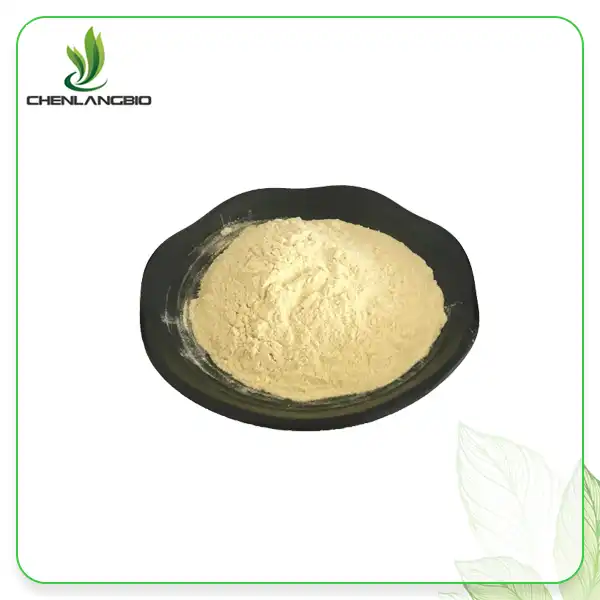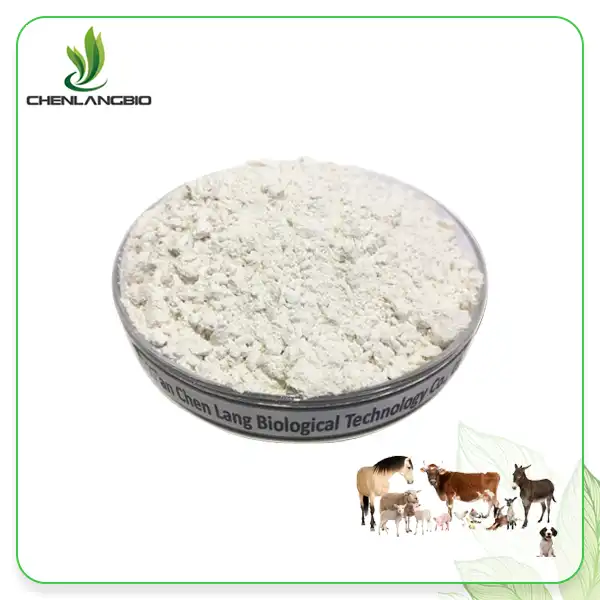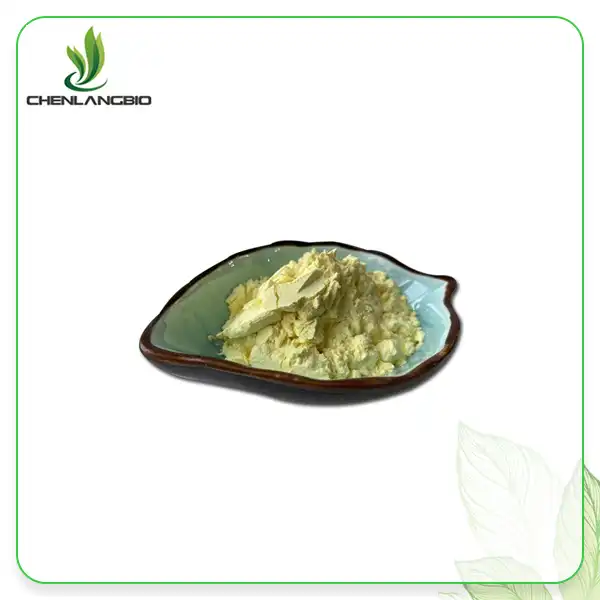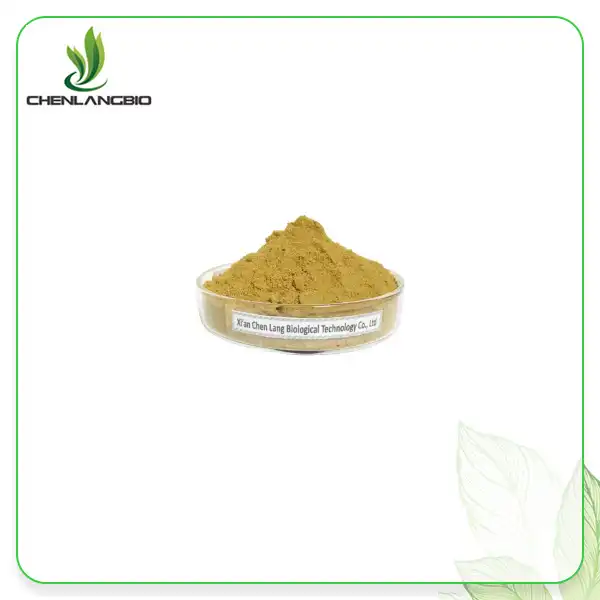Is Sodium Ascorbyl Phosphate Good for Hyperpigmentation
2024-07-13 11:30:50
A common skin condition, hyperpigmentation, also known as dark spots or patches, can be brought on by acne, hormone changes, or exposure to the sun.A vitamin C derivative called sodium ascorbyl phosphate (SAP) is drawing interest because to its possible uses in the treatment of hyperpigmentation. This blog will look at SAP's applicability and efficacy in treating hyperpigmentation.
How Does Sodium Ascorbyl Phosphate Work on Hyperpigmentation?
Understanding Hyperpigmentation
Melanin, the pigment that gives the skin its color, is overproduced when there is hyperpigmentation. Hyperpigmentation can be caused by the following things:
Under the Sun: Melanin production is triggered by UV radiation as a defense mechanism, resulting in sunspots.
Inflammation-induced hyperpigmentation (PIH): Acne, injuries, or skin treatments can all result in dark spots.
Hormonal Changes: Melasma and other skin conditions are often welcomed on by changes in chemicals, particularly during pregnancy.
Mechanism of SAP
There are several ways that sodium ascorbyl phosphate treats hyperpigmentation:
Melanin Blockade: The enzyme tyrosinase, which is essential to the production of melanin, is inhibited by SAP. SAP helps lighten existing dark spots and prevents the formation of new ones by lowering the activity of tyrosinase.
Protection from Oxygen: SAP, a stable form of vitamin C, protects the skin from free radical damage that can exacerbate hyperpigmentation and provides potent antioxidant benefits.
Synthesis of Collagen: SAP helps fade hyperpigmentation over time by stimulating collagen production, promoting cell turnover, and promoting skin renewal.
Clinical Evidence
Studies have shown promising results for SAP in treating hyperpigmentation:
Improved Skin Tone: Regular use of SAP has been shown to improve overall skin tone and reduce the appearance of dark spots.
Reduced PIH: Clinical trials have demonstrated that SAP effectively reduces post-inflammatory hyperpigmentation, particularly in individuals with acne-prone skin.
Is Sodium Ascorbyl Phosphate Safe for All Skin Types?
Suitability for Sensitive Skin
One of the significant advantages of SAP over other vitamin C derivatives is its gentle nature, making it suitable for sensitive skin:
Low Irritation Risk: SAP has a neutral pH, reducing the risk of irritation, redness, and dryness that can be associated with ascorbic acid.
Gentle Formulation: Its stability allows for gentle formulations that are well-tolerated by sensitive skin types.
Compatibility with Other Skin Conditions
SAP is also beneficial for various skin conditions that can accompany hyperpigmentation:
Acne-Prone Skin: SAP’s anti-inflammatory and antimicrobial properties make it an excellent choice for individuals with acne-prone skin, as it helps prevent and treat breakouts while reducing PIH.
Aging Skin: The collagen-boosting properties of SAP support aging skin, helping to improve firmness and reduce the appearance of fine lines and wrinkles.
Patch Testing and Gradual Introduction
To ensure compatibility, it’s advisable to perform a patch test before incorporating SAP into your routine:
Patch Test: Apply a small amount of the product to a discreet area of skin and observe for any adverse reactions over 24 hours.
Gradual Introduction: Start with a lower concentration of SAP and gradually increase usage to allow your skin to adjust.
What Are the Benefits of Sodium Ascorbyl Phosphate Compared to Other Treatments?
Comparison with Ascorbic Acid
While ascorbic acid (pure vitamin C) is highly effective, it has limitations compared to SAP:
Stability: Ascorbic acid is unstable and prone to oxidation, which can reduce its effectiveness over time. SAP, on the other hand, remains stable and potent.
Irritation Potential: Ascorbic acid’s low pH can cause irritation, particularly for sensitive skin, whereas SAP is gentler and less likely to cause adverse reactions.
Comparison with Other Hyperpigmentation Treatments
SAP offers several advantages over traditional hyperpigmentation treatments:
Hydroquinone: While effective, hydroquinone can cause irritation and is associated with potential long-term side effects. SAP is a safer alternative with a lower risk of adverse effects.
Retinoids: Retinoids promote cell turnover but can be irritating and increase sun sensitivity. SAP provides similar benefits without these drawbacks.
Chemical Peels: Chemical peels can be effective but require downtime and can cause irritation. SAP offers a non-invasive alternative with cumulative benefits over time.
Complementary Use
SAP can be used in conjunction with other treatments to enhance results:
Combination Therapy: Combining Sodium ascorbyl phosphate with other active ingredients like niacinamide, hyaluronic acid, and sunscreens can provide comprehensive benefits for hyperpigmentation and overall skin health.
Layering Products: Apply SAP after cleansing and toning but before heavier treatments and moisturizers to ensure optimal absorption and efficacy.
How Should You Incorporate Sodium Ascorbyl Phosphate into Your Skincare Routine?
Selecting the Right Products
SAP is available in various formulations, including serums, creams, and masks:
Serums: These are ideal for delivering a high concentration of SAP directly to the skin. Look for serums with a 5-10% concentration of SAP for effective results.
Creams: SAP-infused creams provide hydration and are suitable for daily use. They can be used in the morning and evening routines.
Masks: For an intensive treatment, use SAP masks once or twice a week to boost skin brightness and reduce hyperpigmentation.
Application Tips
To maximize the benefits of Sodium ascorbyl phosphate, follow these application tips:
Cleanse Thoroughly: Start with a clean face to ensure maximum absorption.
Apply to Damp Skin: Applying SAP to slightly damp skin can enhance its penetration.
Follow with Moisturizer: Lock in the benefits of SAP with a good moisturizer to maintain skin hydration and barrier function.
Frequency of Use
The frequency of use can vary based on your skin’s tolerance:
Daily Use: For most skin types, daily use of SAP is beneficial. Apply it in the morning to take advantage of its antioxidant properties.
Alternate Days: If you experience sensitivity, use SAP every other day to allow your skin to adjust.
Monitoring Results
Keep track of your skin’s response to SAP and adjust your routine as needed:
Initial Breakouts: Some individuals may experience an initial breakout period as their skin adjusts to SAP.
Skin Improvement: Regular use of SAP should result in a brighter, more even skin tone over time.
What Should You Look for in a Sodium Ascorbyl Phosphate Product?
Key Ingredients
When choosing an SAP product, consider the following key ingredients:
High Concentration of SAP: Ensure the product contains a sufficient concentration of SAP (at least 5%) for effectiveness.
Supporting Ingredients: Look for additional ingredients like hyaluronic acid for hydration, niacinamide for added brightening, and antioxidants for comprehensive skin protection.
Product Formulation
The formulation of the product can impact its effectiveness:
Stability: Choose products with stable formulations to ensure the SAP remains potent.
Packaging: Opt for products in opaque, airtight packaging to protect SAP from light and air exposure.
Brand Reputation
Select products from reputable brands known for their quality and efficacy:
Research and Reviews: Look for brands with positive reviews and clinical backing to ensure you’re investing in a quality product.
Dermatologist Recommended: Consider products recommended by dermatologists for added assurance.
Conclusion
Sodium ascorbyl phosphate is a promising ingredient for addressing hyperpigmentation, offering stability, safety, and effectiveness. Its gentle nature makes it suitable for a wide range of skin types, and it can be a valuable addition to any skincare routine aiming to achieve a brighter, more even complexion. For personalized advice or more information about our products, feel free to contact us at admin@chenlangbio.com.
References
Healthline | The Benefits and Uses of Sodium Ascorbyl Phosphate
Byrdie | Sodium Ascorbyl Phosphate: What It Is and How It Benefits Your Skin
Allure | Everything You Need to Know About Sodium Ascorbyl Phosphate
Journal of Clinical and Aesthetic Dermatology | Sodium Ascorbyl Phosphate: A Vitamin C Derivative for Skin Health
Dermatology Times | Understanding the Role of Sodium Ascorbyl Phosphate in Skincare
WebMD | Sodium Ascorbyl Phosphate: Benefits, Uses, and More
Medical News Today | The Benefits of Vitamin C Derivatives in Skincare
Marie Claire | Sodium Ascorbyl Phosphate: A Stable and Effective Vitamin C Alternative
Vogue | The Rise of Sodium Ascorbyl Phosphate in Skincare
American Academy of Dermatology | Vitamin C in Skincare: Understanding Sodium Ascorbyl Phosphate
Send Inquiry
Related Industry Knowledge
- How Can Acetylcysteine Powder Improve Your Respiratory Health Formulations?
- Benefits of Helichrysum Arenarium Flower Extract
- What is Mung Bean Peptide Powder?
- Red Wine Extract Powder: Weight Management and Wellness
- Does Sodium Copper Chlorophyllin Affect Oxalate Levels
- Is Loratadine the Same as Pseudoephedrine
- What are the Life Threatening Considerations for Loratadine
- Do Green Tea Extract Have Caffeine
- Is Honokiol the Same as Magnolia Bark
- Is Aloe Vera Gel Freeze-Dried Powder Good for Skin









